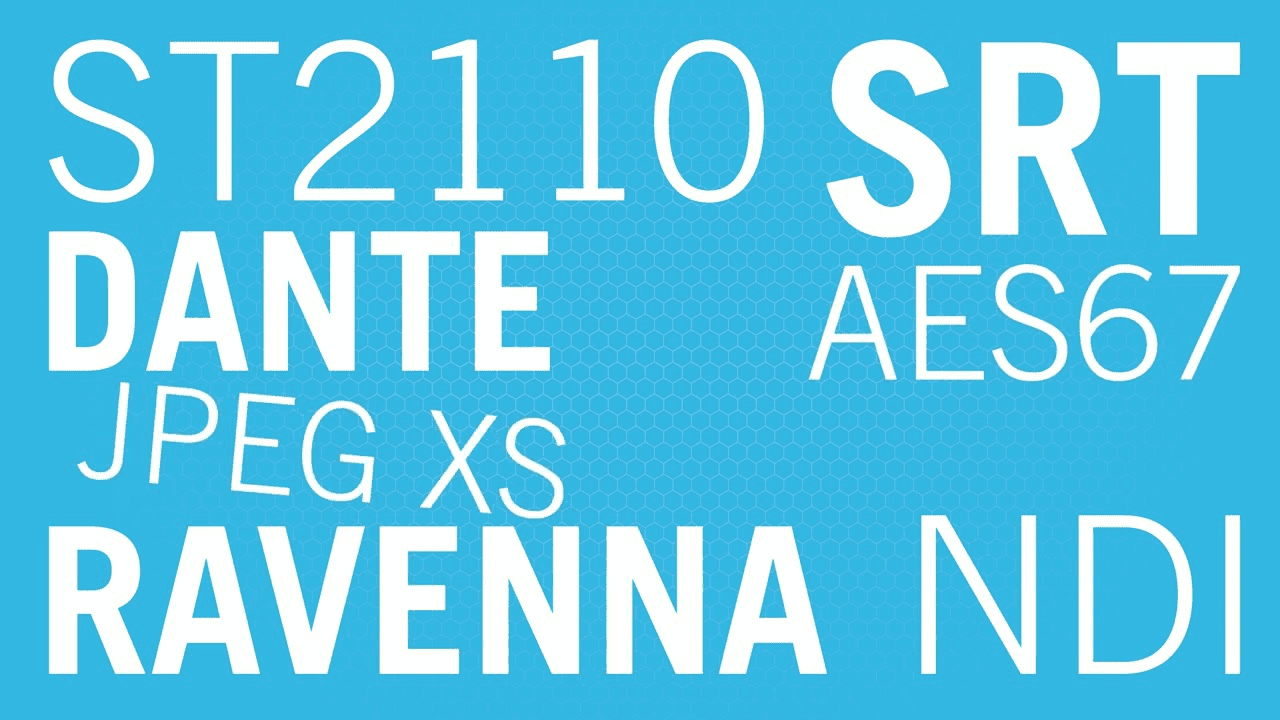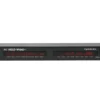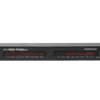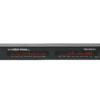AES67, ST2110 and Dante
Audio over IP (AoIP) initially gained traction as traditional analog and early digital audio distribution systems hit their practical limits. The shift started in broadcasting, where routing hundreds of audio channels efficiently became a challenge for conventional matrix systems, making them more cumbersome and costly.
Nowadays, nearly every major audio equipment manufacturer offers products compatible with AoIP, ranging from mixing consoles and DSP systems to amplifiers and microphones. This widespread adoption has effectively positioned AoIP as the go-to technology for new installations and a must-have in any AV technician’s toolkit.

AOIP Definition
AoIP, which stands for Audio over Internet Protocol, is a method for sending digital audio signals across an IP network—typically a Local Area Network (LAN). Essentially, the audio is broken down into small digital packets and then routed to its destination using the existing network infrastructure. The IP address ensures that each audio packet reaches the correct endpoint, such as a speaker, even when there are multiple destinations involved (like several speakers). Upon arrival, the receiving device needs to be able to reassemble these audio packets and direct them appropriately.
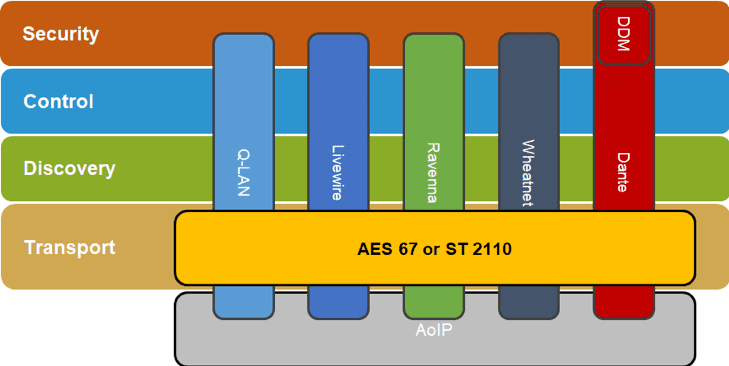
Advantage and benefit of AOIP
The Advantages of AoIP Systems Over Traditional Audio Infrastructure
Dynamic Routing: Unlike traditional fixed connections, AoIP enables any input to be routed to any output without needing to rewire anything. This means you can instantly reconfigure audio paths using software, instead of manually patching cables.
Format Flexibility: Modern AoIP systems can handle multiple audio formats, sample rates, and bit depths all within the same network. They automatically manage format conversion when necessary, making it incredibly versatile.
Distance Freedom: Traditional audio cables struggle over long distances, but AoIP can send high-quality audio across buildings, campuses, or even cities using standard network infrastructure without any loss in quality.
Integration: AoIP easily connects with software-based audio processing, virtual sound cards, and cloud services. This opens up workflow possibilities that would be impractical with old-school connections.
Scalability and Adaptability
Channel Capacity: A single network cable can carry hundreds of audio channels in both directions. This is a huge leap from analog systems that only handle one or two channels per cable, or traditional digital systems that max out at 8-64 channels.
Easy Expansion: You can grow your system organically by just adding more network switches and endpoints. There’s no need for a complete infrastructure redesign like with traditional matrix systems.
Resource Sharing: Network-based audio allows multiple users and systems to access shared resources like DSP processing or recording devices without needing dedicated connections for each one.
Future-Proofing: As your facility grows, AoIP can adapt through software updates and configuration changes. Often, you won’t need to replace all your hardware.
Economic Benefits:
Cost Savings on Infrastructure: Standard Cat6 cabling is much cheaper than specialized multi-channel audio cables, especially for long runs. This means big savings on materials, installation time, and conduit space.
Hardware Simplification: Network switches can replace multiple distribution amplifiers, routers, and patch bays. This reduces rack space, power consumption, and maintenance needs.
Operational Efficiency: Software-based routing and monitoring cut down on the labor costs associated with physical reconfiguration and troubleshooting.
Standardization: Using standard IT components instead of specialized audio gear creates economies of scale. Plus, you can leverage your existing IT infrastructure and expertise.
Long-Term Adaptability: The ability to reconfigure systems through software rather than hardware changes significantly reduces costs associated with evolving facility requirements over time.
These combined benefits have made AoIP the go-to solution for new audio installations. The economic and operational advantages far outweigh the initial learning curve required for implementation.
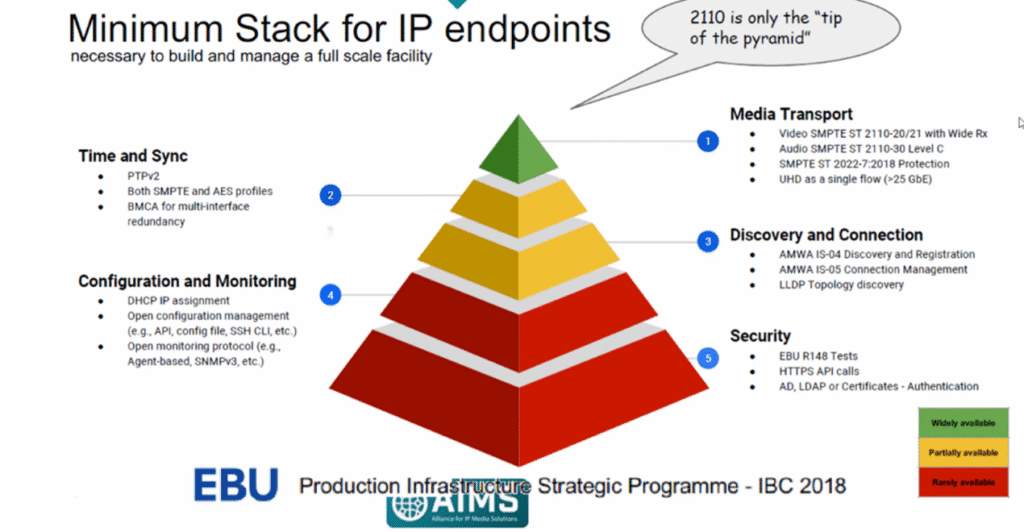
Dante, AES67, And ST2110
Dante: The Most Widely Used AoIP Solution

Dante is an uncompressed digital audio format that runs over standard IP networks. It’s designed to handle high-performance audio with low latency and minimal jitter, making it ideal for professional applications. One of its key features is automatic device discovery, which simplifies setup. The Dante Controller software offers a user-friendly drag-and-drop interface for routing audio, streamlining system configuration. A single network cable can carry hundreds of audio channels, significantly reducing the need for traditional analog cabling.
AES67: Bridging the Gap Between Different AoIP Systems

AES67 enhances Dante’s functionality by enabling cross-compatibility with other AoIP ecosystems. This ensures flexible configurations for broadcast and professional audio applications, which is crucial in environments where different AoIP protocols need to interact seamlessly. AES67 allows Dante devices to communicate with Ravenna, Livewire, and WheatNet-IP, making it the ideal solution for multi-vendor AoIP networks.
ST 2110: The Future of Professional Media Over IP
SMPTE ST 2110 is a suite of standards designed to transport professional media content over IP networks. It breaks down video, audio, and ancillary data into separate IP streams, each carrying timing information, ensuring synchronization and quality.
Key Features include Independent Stream Transport, High-Quality Transmission, Open Standard, and Interoperability.

Multi-room Steaming Amplifier with AES67
OpenAudio has many audio device support AES67, such as its HOLOSOUND Immersive audio processor DCAP-OBIA, its immersive DAC DAC-OBIA, and its immersive amplifier SMA-OBIA. And it will release one multi-room streaming amplifier with AES67 capability in 2026 Q3.


